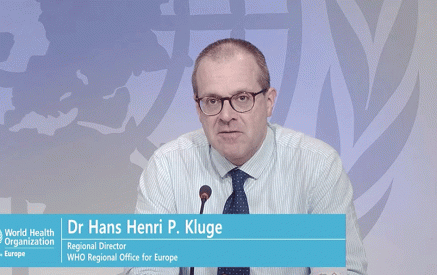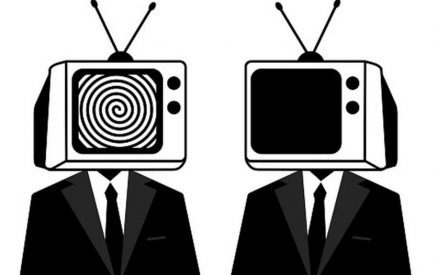WHO/Europe releases Ukraine Crisis Strategic Response Plan for June – December 2022
Prior to the war, Ukraine had a functioning health system with 1,630 hospitals and 10,140 primary health care facilities but was already facing multiple health-related challenges. Life expectancy was lower than in the EU by nine years – at 72 versus 81 years – and about 12% of patients of working age who had a stroke subsequently died with about 50% remaining with a primary disability.
Ukraine has one of the highest catastrophic health expenditures among countries in the Region, with more than one-third of hospital admissions being potentially unnecessary. Health sector reform in Ukraine, initiated in 2016, encompasses the eHealth system. Currently, more than 35 million Ukrainians are registered in the Ministry of Health (MoH) system, which connects to health records at both primary and secondary health levels. However, health services are not solely provided through the MoH but also through the Ministry of Transport, Ministry of Defence, and Presidential Administration, for example. Moreover, digitalized records are not accessible to patients and therefore are not available when they seek refuge in other countries. The current system is also unable to provide for early warning, syndromic surveillance, and remote health care, to name a few services.
Ukraine suffers from low immunization rates for all vaccine-preventable diseases – 81.9% for measles (second dose of measles-containing vaccines, or MCV) and 84.2% for polio (pol3). The national COVID-19 vaccination rate for one dose is estimated to be 36%. The vaccination coverage is less than 50% in regions with the largest population displacement, including eastern Ukraine. This, along with disruption in testing and treatment, puts those who are most vulnerable at increased risk of severe illness and death. Moreover, given suboptimal routine childhood vaccination coverage, the crisis and displacement will further increase existing immunity gaps in Ukraine, and potentially other countries, and therefore the risk of outbreaks of vaccine-preventable diseases. The last nationwide outbreak of measles in Ukraine started in 2017 and reached a peak in 2019, reflecting a prolonged suboptimal vaccination coverage with MCV.
Read also
Another concern is the outbreak of circulating vaccine-derived poliovirus type 2 (cVDPV2) that Ukraine has been experiencing since September 2021. As of 25 February 2022, there have been two detected paralytic cases and 19 isolations of cVDPV2 from asymptomatic contacts. A so-called catch-up polio immunization campaign, introduced by the Ukrainian MoH and WHO in early February 2022, was put on hold due to the conflict and is now being revived.
Overcrowded conditions in shelters, population displacement, infrastructure damage as well as exacerbating factors, such as lack of adequate water, sanitation and hygiene, nutritional stress and exposure to cold weather during winter, could increase the risk of respiratory and diarrheal diseases, including cholera, and thus it is critical to strengthen the early warning and alert component of the disease surveillance system to capture the various hazards.
Conflict and infrastructure damage can lead to direct health impacts through trauma and injuries. Lack of access to emergency health care can lead to increased morbidity and mortality from trauma and injuries as well as a range of other common conditions as indicated below. Lack of access to good quality rehabilitation care that is embedded in the community may result in long-standing disability. Lack of access to preventive and emergency health care can also lead to unnecessary excess illness and death from complications of pregnancy and childbirth, and neonatal and childhood conditions.
Noncommunicable diseases (NCDs) are the leading cause of morbidity and mortality in Ukraine, with the five major NCDs – cardiovascular disease, diabetes, cancer, chronic respiratory disease, and mental health conditions – accounting for 84% of all deaths. Disruptions in treatment for chronic cardiovascular and respiratory diseases increase morbidity and, most likely, mortality.
About 120,000 people are living with Type 1 diabetes and need to receive regular doses of life-saving medicines to survive. Some key challenges identified have included difficulties in being able to control diabetes, a lack of continuous supply of medicines for chronic disease, and the lack of compatibility of medicines for returnees to Ukraine due to different EU/Ukraine licensing and registration.
Ukraine has the second-highest burden of HIV/AIDS in Europe, with an estimated prevalence rate of one percent among Ukrainians between the ages of 15 and 49. It is assessed that about 59,000 people on antiretroviral (ARV) therapy reside in areas affected by the war. Ukraine has the fifth-highest number of confirmed cases of extensively drug-resistant TB, globally. Shortages of medicines and medical supplies, challenging access to essential health services, and the interruption of prevention, diagnostic and treatment services pose a severe threat of adverse outcomes from these conditions.
Furthermore, during the COVID-19 pandemic, the case detection rate of TB was half of that prior to the pandemic. And now, the war has weakened TB surveillance capacity and interrupted continuous treatment regimens. This will probably result in an increased spread of drug-resistant TB.
Gender-based violence (GBV) is a widespread human rights violation globally, with potential life-threatening health consequences. Crises and emergencies greatly exacerbate all forms of GBV, including sexual exploitation and abuse (SEA), and at least two out of three women in Ukraine had experienced some form of GBV before the conflict. The security context and displacement have resulted in a sharp increase in the risk of multiple forms of violence, including SEA and trafficking of persons. The proliferation of agencies and non-vetted volunteers and voluntary organizations further increases the risk of SEA and all forms of sexual misconduct.
WHOs response
The health response will target the entire country of Ukraine and neighbouring countries where there is an influx of refugees. Under the humanitarian core principles, this strategic response plan aims to meet the essential health care needs of all affected populations regardless of where they may be, and to ensure that the required services are accessed in safe environments consistent with the principles of protection.
WHO/Europe Press Office



























































